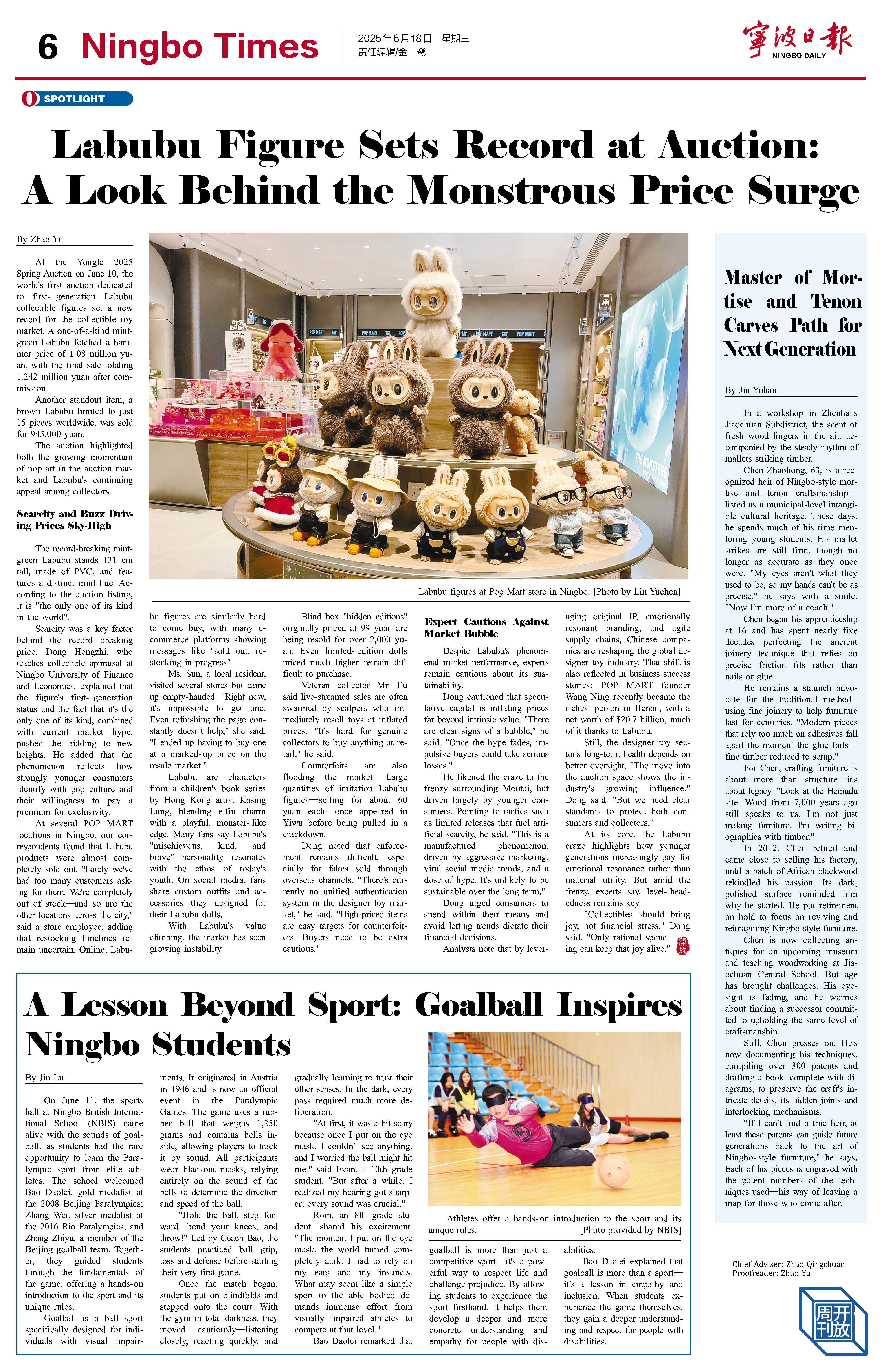By Jin Yuhan
In a workshop in Zhenhai's Jiaochuan Subdistrict, the scent of fresh wood lingers in the air, accompanied by the steady rhythm of mallets striking timber.
Chen Zhaohong, 63, is a recognized heir of Ningbo-style mortise-and-tenon craftsmanship—listed as a municipal-level intangible cultural heritage. These days, he spends much of his time mentoring young students. His mallet strikes are still firm, though no longer as accurate as they once were. "My eyes aren't what they used to be, so my hands can't be as precise," he says with a smile. "Now I'm more of a coach."
Chen began his apprenticeship at 16 and has spent nearly five decades perfecting the ancient joinery technique that relies on precise friction fits rather than nails or glue.
He remains a staunch advocate for the traditional method - using fine joinery to help furniture last for centuries. "Modern pieces that rely too much on adhesives fall apart the moment the glue fails—fine timber reduced to scrap."
For Chen, crafting furniture is about more than structure—it's about legacy. "Look at the Hemudu site. Wood from 7,000 years ago still speaks to us. I'm not just making furniture, I'm writing biographies with timber."
In 2012, Chen retired and came close to selling his factory, until a batch of African blackwood rekindled his passion. Its dark, polished surface reminded him why he started. He put retirement on hold to focus on reviving and reimagining Ningbo-style furniture.
Chen is now collecting antiques for an upcoming museum and teaching woodworking at Jiaochuan Central School. But age has brought challenges. His eyesight is fading, and he worries about finding a successor committed to upholding the same level of craftsmanship.
Still, Chen presses on. He's now documenting his techniques, compiling over 300 patents and drafting a book, complete with diagrams, to preserve the craft's intricate details, its hidden joints and interlocking mechanisms.
"If I can't find a true heir, at least these patents can guide future generations back to the art of Ningbo-style furniture," he says. Each of his pieces is engraved with the patent numbers of the techniques used—his way of leaving a map for those who come after.


